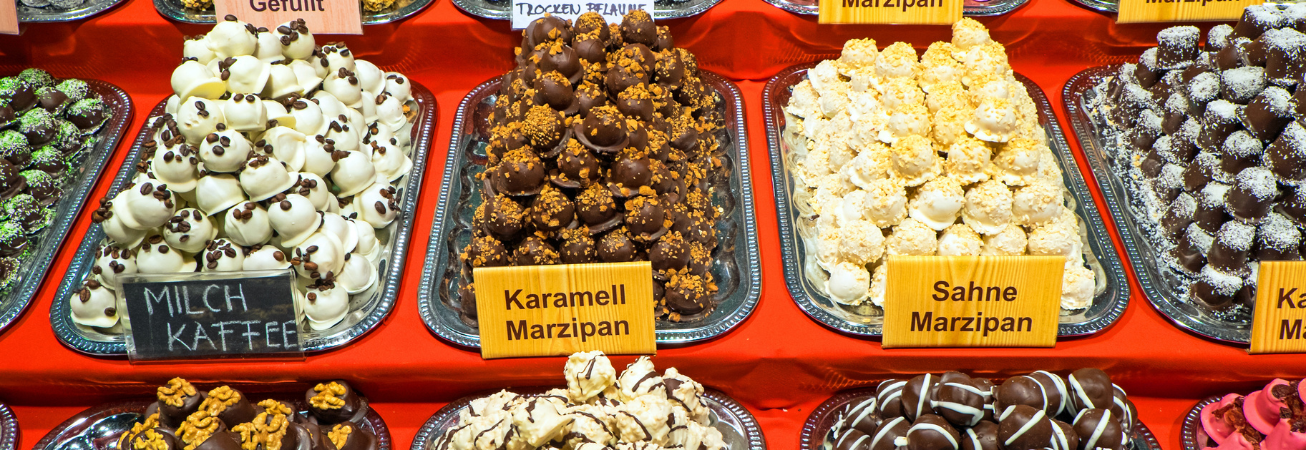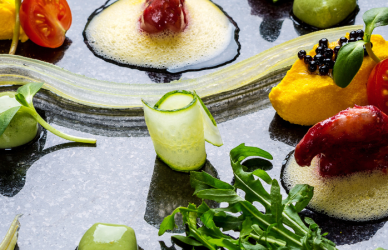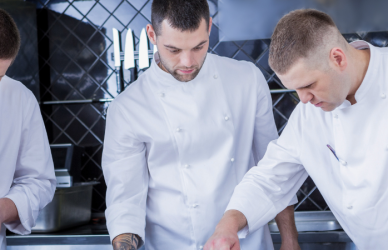Think you know German desserts? Think again. While Black Forest Cake (Schwarzwälder Kirschtorte) and Apfelstrudel have gained international fame, Germany’s regional bakeries hide a treasure trove of lesser-known confections that are just as indulgent—and sometimes even more memorable.
In this article, we explore underrated German desserts that deserve the spotlight. From creamy layer cakes with royal origins to tart berry compotes passed down for generations, these sweet creations reflect the rich cultural and culinary diversity of Germany’s regions.
Rote Grütze – Northern Germany’s Berry Classic
Originally from Schleswig-Holstein and Hamburg, Rote Grütze is a vibrant red berry compote traditionally made with redcurrants, raspberries, and cherries. It’s often served chilled with vanilla sauce, whipped cream, or a scoop of ice cream.
- Why try it: Light, tangy, and not overly sweet—perfect after a rich meal.
- Where to find it: Northern German cafés and home-style restaurants.
Donauwelle – The Wavy Marble Cake with a Twist
Donauwelle, or “Danube Wave,” is a layered cake made with chocolate and vanilla sponge, sour cherries, buttercream, and a dark chocolate glaze. The cherries create a wave-like pattern in the cake—hence the name.
- Why try it: A perfect blend of fruity, creamy, and rich chocolate textures.
- Where to find it: Common in bakeries across Bavaria and Austria-adjacent regions.
Prinzregententorte – A Royal Bavarian Delight
Named after Prince Regent Luitpold of Bavaria, this elegant dessert features 7 to 9 thin layers of sponge cake, filled with chocolate buttercream and coated in a dark chocolate glaze.
- Why try it: It’s a lighter, more refined alternative to chocolate-heavy cakes like Sachertorte.
- Where to find it: Traditional bakeries in Munich and throughout Bavaria.
Kalter Hund – The No-Bake Nostalgia Cake
“Cold Dog” or Kalter Hund is a no-bake dessert made with layers of butter biscuits and chocolate glaze, typically refrigerated in a loaf pan until set.
- Why try it: Retro, easy to love, and popular at children’s birthdays—but increasingly making a comeback in trendy cafés.
- Where to find it: Berlin cafés and vintage-style bakeries.
Eierschecke – Saxony’s Hidden Gem
From Dresden and Saxony, Eierschecke is a three-layer cake consisting of shortcrust, quark-based cheesecake filling, and a custard-like topping made with eggs and cream.
- Why try it: Creamy, fluffy, and lightly sweet—a unique regional alternative to standard cheesecakes.
- Where to find it: Coffee houses in Dresden, Leipzig, and nearby towns.
Bienenstich – “Bee Sting” with a Sweet Punch
Made with yeast dough, a caramelized almond crust, and a rich vanilla cream filling, Bienenstich is both crunchy and creamy.
- Why try it: The almond topping and soft custard filling create a mouthwatering contrast.
- Where to find it: Nationwide, especially in traditional German Konditoreien (pastry shops).
Modern Takes on Traditional Treats
Contemporary German patisseries and food trucks are also reinventing these classics:
- Vegan Donauwelle made with coconut cream
- Prinzregententorte with coffee buttercream
- Rote Grütze layered into parfaits with granola and yogurt
Instagrammable and nostalgic, these desserts are drawing a new generation of fans—both locally and internationally.
Conclusion
German dessert culture is deeper and more diverse than most realize. These lesser-known sweets tell stories of regional pride, royal history, and family tradition, offering a delicious window into Germany’s rich culinary heritage.
So next time you’re in a German bakery, skip the usual Strudel and ask for something unexpected—you might just discover your new favorite dessert.





